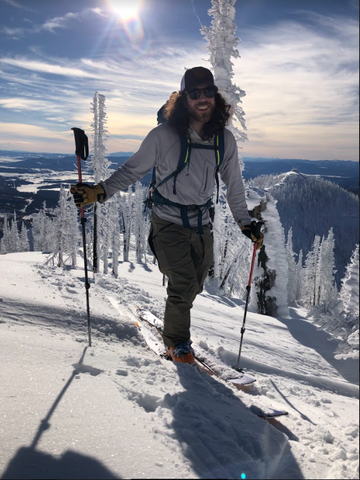But, with this freedom comes responsibility.
Ski patrol is not around to help you if you get into a sticky situation or are injured.
My partners and I had to manage a self-rescue and gained a lot of insight through it.

We found what we were looking for, a mellow 200-foot slope with no overhead hazard.
One of my touring partners for the day mentioned it being the best snow he had ever skied.
Deep and blower, the conditions all skiers dream of.

Righting myself onto my hip, I noticed my knee felt a bit off.
There was no pain, but it felt loose.
I knew I wasnt going to be getting out of there under my own power.
This builds the frame of the sled.
Attach the paracord to the front cross-section for hauling.
I like to use a girth-hitch which leaves two lines of paracord for two people to haul.
The two strands go to the people hauling.
Pad the hips of the people hauling with gloves so the paracord doesnt painfully dig into their hips.
Alternatively, keep a loop of webbing in your pack for your waist and attach the paracord to that.
Use one or two backpacks to create the seat of the sled.
Attach them with the back facing up.
The waist belt can be used to hold the patient to the sled so they dont fall off.
They will have to work extremely hard.
In my scenario, we were 3.5 miles back which is an incredibly long way to go.
It took us six hours from my injury until we were back at the car.
Hand warmers were crucial for keeping my hands from freezing while being immobile.
Being unable to move for six hours, it was difficult to keep warm.
Our self-rescue went as smooth as one could possibly go given the circumstances.
Even so, it was a long and painstaking process.
This is why it is important to have basic self-rescue skills if you recreate in the backcountry.
The basic gear is already in your pack, or its a very inexpensive purchase.
To practice building a sled takes less than an hour of your time.
So get the gear and practice.
You do not want to be figuring it out for the first time in the middle of an emergency.
Again, practice your emergency skills, you want them to be second nature.
Backcountry skiing is an empowering and fun sport, but the reality of the danger needs to be faced.
A little bit of preparation can go a long way when things start to go wrong.
Learn the skills, practice them, and be a safer skier.